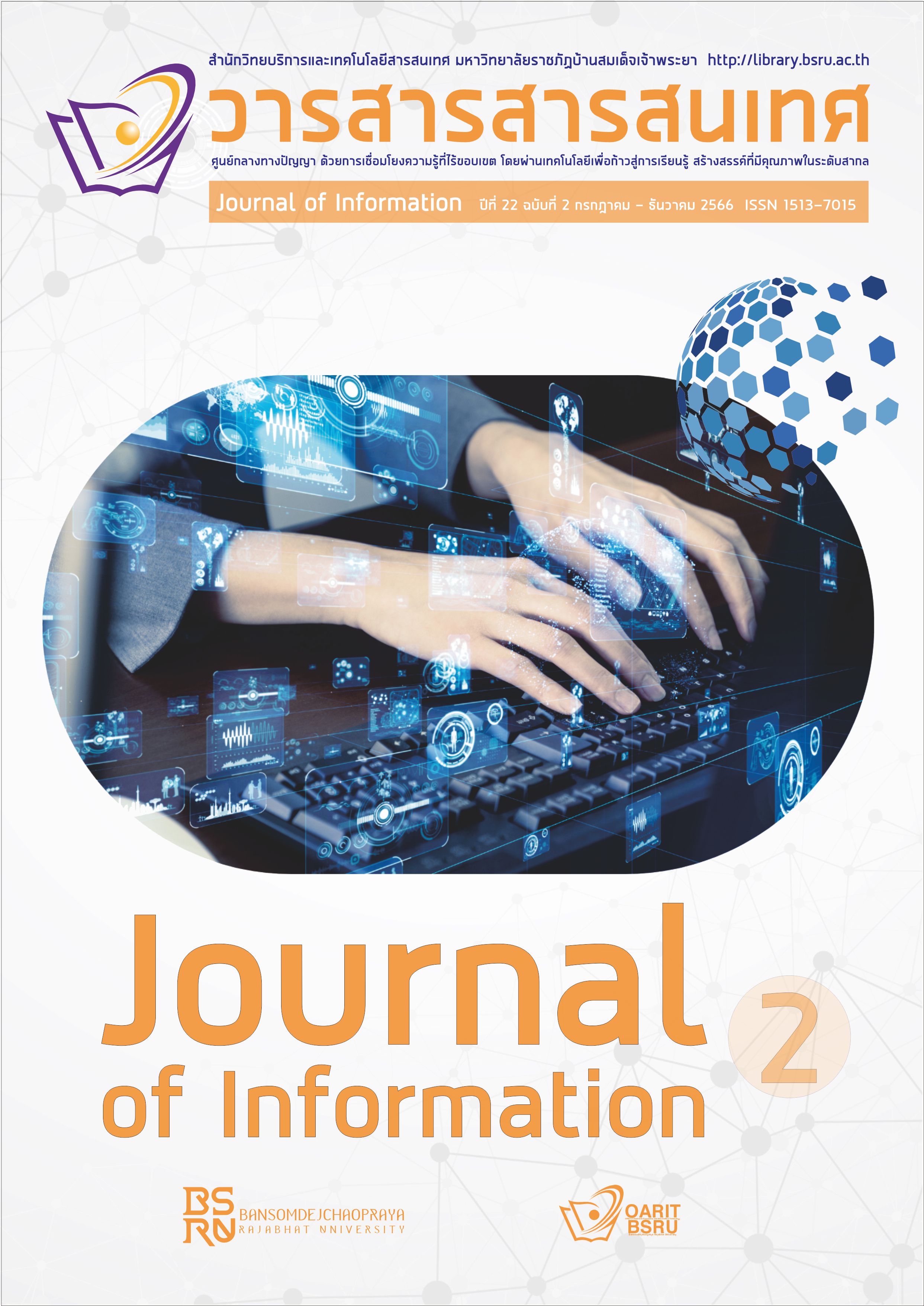Satisfaction with Active Learning Activities Implementation in Digital, Media, and Information Literacy: A Case Study of Kamphaeng Phet Rajabhat University
Keywords:
Active learning, Information literacy, Media literacy, Digital literacy, SatisfactionAbstract
The purpose of this study was to examine subject satisfaction with active learning activities. 91 students are enrolled in "Digital, Information, and Media literacy (9001301)" for the first semester of the academic year 2022 at Kamphaeng Phet Rajabhat University's Bachelor of Business Administration Course. The instruments of research were questionnaires. The study used frequency distribution, percentage, mean, and standard deviation statistics. Students reported overall satisfaction with "teaching preparation," "teaching technique," "material received," and "active learning activities for each category," according to the findings. There are recommendations for future enhancements, including the addition of more study time. Modernizing equipment via upgrades. For the next academic year, let's keep students engaged in interesting active learning activities like moral theatre plays on digital society's issues, news analyses and presentations about Thailand's cyber criminals.
References
กมล โพธิเย็น. (2564). Active Learning: การจัดการเรียนรู้ที่ตอบโจทย์การจัดการศึกษาในศตวรรษที่ 21. ว.ศึกษาศาสตร์ มหาวิทยาลัยศิลปากร. 19(1), 11-28.
ณัฐตะวัน ลิ้มประสงค์. (2562). การพัฒนาการจัดการเรียนรู้ด้วยกระบวนการ Active Learning รายวิชาการบริหาร และการประกันคุณภาพการศึกษา. ว.วิชาการ Veridian E-Journal, Silpakorn University. 12(5),1316-1342.
ทัศน์ศรี เสมียนเพชร. (2556). การประเมินองค์ประกอบและการพัฒนากระบวนการเรียนรู้เชิงรุกของสถาบันอุดมศึกษาเพื่อเปลี่ยนผ่านเข้าสู่ศตวรรษที่ 21. ว.สังคมศาสตร์ มหาวิทยาลัยวลัยลักษณ์. 6(1), 59-80.
ธนพัฒน์ อินทวี. (2563). ปัจจัยสาเหตุที่ส่งผลต่อความพึงพอใจในการเรียนแบบ Active Learning ของนักศึกษามหาวิทยาลัย. ว.นวัตกรรมการศึกษาและการวิจัย. 4(1), 383-394.
ปัณฑิตา อินทรักษา. (2562). การจัดการเรียนรู้ด้วย Active Learning เพื่อการแก้ปัญหาอย่างสร้างสรรค์. ว.ครุศึกษา มหาวิทยาลัยราชภัฏอุดรธานี. 1(1), 35-43.
ปัณพร ศรีปลั่ง, และเพ็ญผกา ปัญจนะ. (2564). การศึกษาผลการเรียนรู้นวัตกรรมและเทคโนโลยีสารสนเทศเพื่อการศึกษาและการเรียนรู้ ของผู้เรียนด้วยกระบวนการ Active Learning. ว.มหาวิทยาลัยราชภัฏร้อยเอ็ด. 15(3), 144-152.
พิมพันธ์ เดชะคุปต์, และพเยาว์ ยินดีสุข. (2561). การเรียนรู้เชิงรุกแบบรวมพลังกับ PLC เพื่อการพัฒนา.จุฬาลงกรณ์มหาวิทยาลัย.
พัสสกรณ์ วิวรรธมงคล. (2564). การพัฒนาการจัดกิจกรรมการเรียนรู้แบบ Active Learning โดยใช้แหล่งเรียนรู้ทางประวัติศาสตร์ในพื้นที่จังหวัดพระนครศรีอยุธยาสำหรับนักศึกษาครู. ว.มจร สังคมศาสตร์ปริทรรศน์. 10(2), 198-210.
วารินท์พร ฟันเฟื่องฟู. (2562). การจัดการเรียนรู้ Active Learning ให้สำเร็จ. ว.วไลยอลงกรณ์ปริทัศน์. 9(1), 135-145.
วีรวิชญ์ บุญส่ง. (2565). การพัฒนาความสามารถด้านการคิดวิเคราะห์วิจารณ์ของนักศึกษาสาขาวิชา สังคมศึกษาชั้นปีที่ 3 โดยใช้กิจกรรมการเรียนรู้แบบ Active Learning. ว.การบริหารนิติบุคคลและนวัตกรรมท้องถิ่น. 8(3), 73-85.
อริยา คูหา, สรินฎา ปุติ, และฮานานมูฮิบบะตุดดีน นอจิ. (2562). โลกที่เปลี่ยนแปลงการเรียนรู้ที่ผ่านสู่ Active Learning. ว.ศึกษาศาสตร์ มหาวิทยาลัยสงขลานครินทร์ วิทยาเขตปัตตานี. 30(2), 1-13.
Michael, J. A. & Modell, H. I. (2003). Active learning in college and science classrooms: A working model helping the learner to learn. Lawrence Erlbaum Associates Publishers.
Rodney, C. & Stuart, P. (2015). Active learning: The importance of developing a comprehensive measure. Active Learning in Higher Education. 16(3), 1-14.
Downloads
Published
How to Cite
Issue
Section
License

This work is licensed under a Creative Commons Attribution-NonCommercial-NoDerivatives 4.0 International License.
บทความ ข้อความ ภาพประกอบ และตารางประกอบที่ลงพิมพ์ในวารสารเป็นความคิดเห็นส่วนตัวของผู้นิพนธ์ กองบรรณาธิการไม่จำเป็นต้องเห็นตามเสมอไป และไม่มีส่วนรับผิดชอบใดๆ ถือเป็นความรับผิดชอบของผู้นิพนธ์เพียงผู้เดียว






